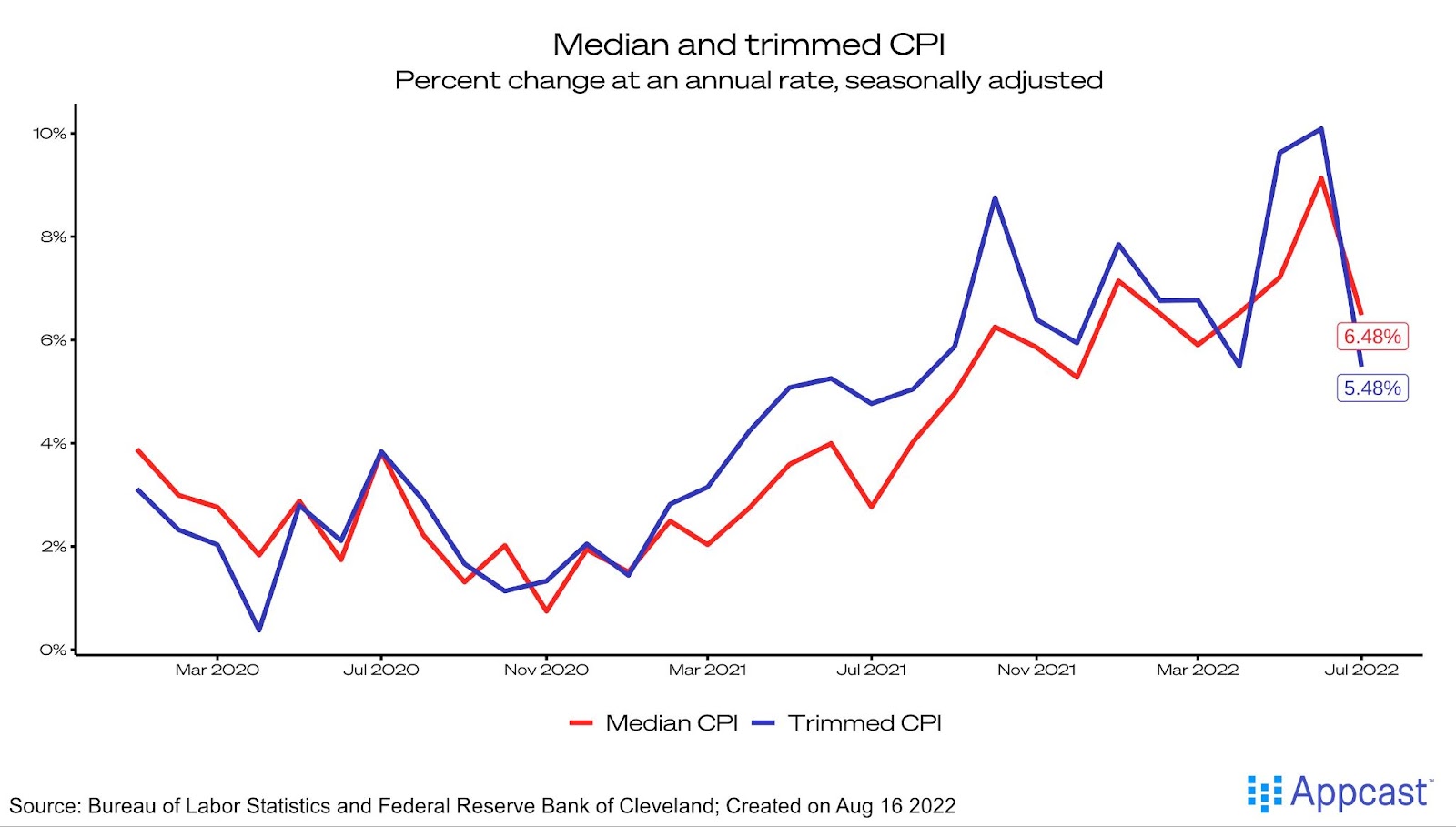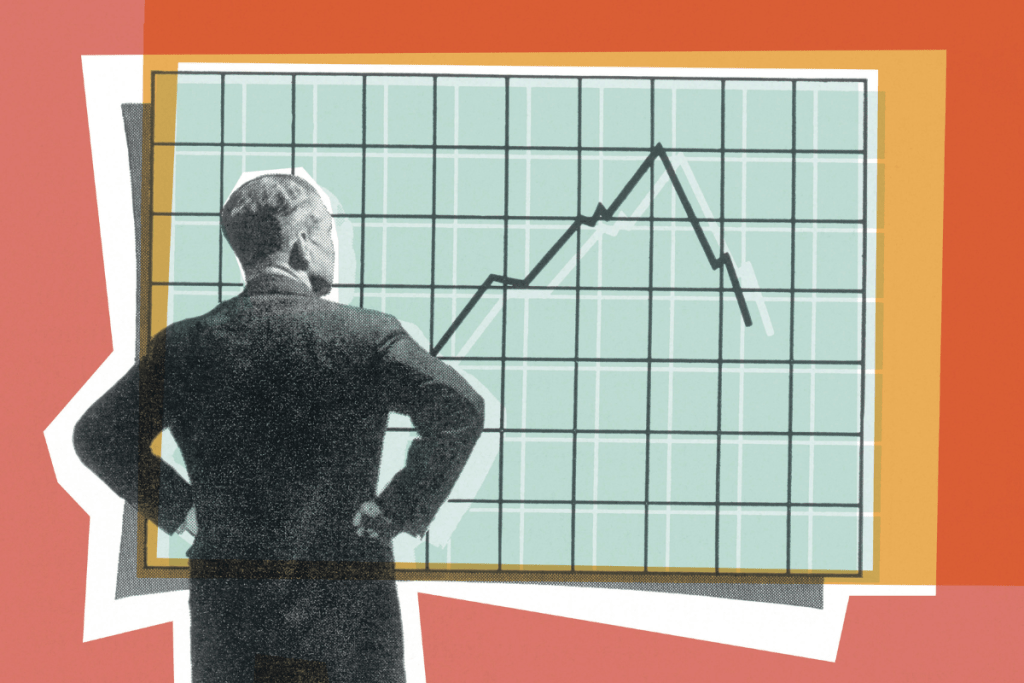The first question to answer is – how does inflation change? The Consumer Price Index (CPI) tracks all goods and services commonly bought by consumers. The index’s value was 295.328 in June, then 295.271 in July. If we looked strictly at the monthly change, that would mean inflation decreased by -.019%, effectively a rounding error. However, the percent change from a year ago was 8.5%. These are two accurate data points that can lead to vastly different conclusions.
The Cleveland Federal Reserve publishes their own version of inflation – the median and trimmed CPI. The median CPI captures price changes right in the middle of the basket of commonly-bought goods, and the trimmed CPI excludes components with rapid price changes. These measures simultaneously capture the overall trend of inflation while removing some of the more conflicting noise from the headline number. In July, both median and trimmed CPI are lower at an annual rate compared to the headline yearly change, while the monthly change is higher.

Perhaps the answer to this debate is striking a balance between these various measures. The headline number serves as a gauge on the overall trend, while median and trimmed CPI measure deeper changes within inflation.
What does this mean for recruiters? While inflation could cool for the remainder of 2022 and beyond, it is important to understand the underlying trends. Yearly cost of living adjustments are coming – and will most likely be higher than average. Analyzing deeper parts of the CPI will give recruiters a competitive edge when raises are being discussed, and could make it easier to hire in hard-to-fill industries.
What does this mean for consumers? Technically, inflation did not increase from June to July, however from 2021 it has – by a lot. Consumers are grappling with the reverberating effects of high inflation and a single positive monthly report will not change that. The remaining CPI reports in 2022 will be watched closely for signs of continual deceleration, indicating that the Federal Reserve will achieve its goal of a “soft-landing”.







